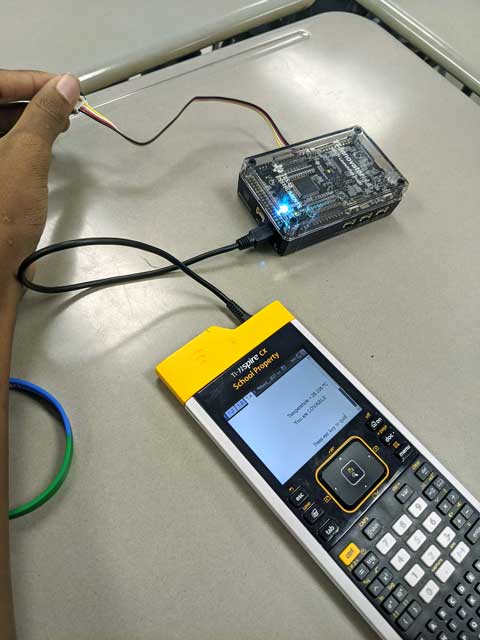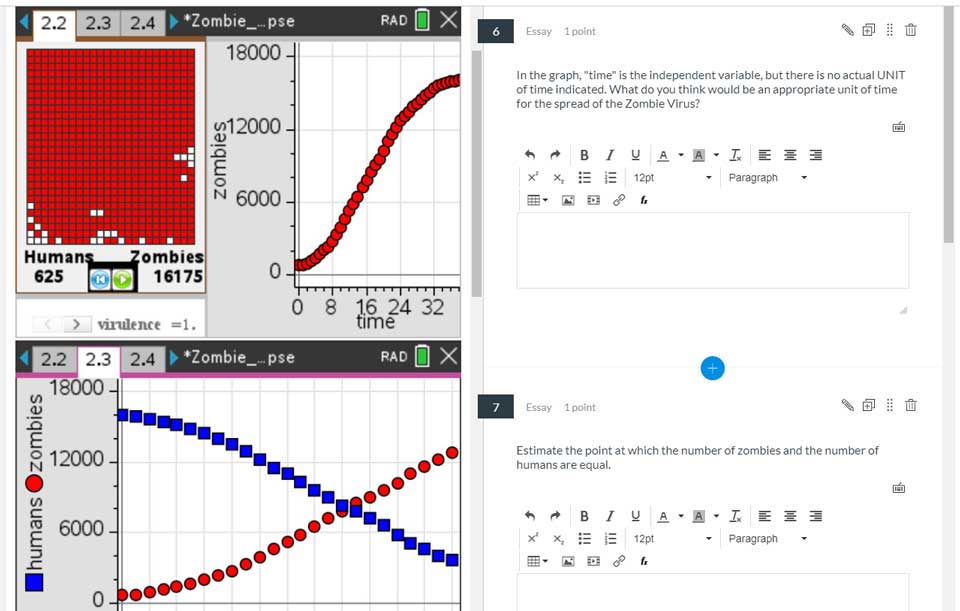Tips for Surviving the School Year, Whatever It May Look Like!
The last year and a half has been really hard for many of us in education. We dealt with so many big changes in such a small amount of time. We learned new ways of doing our jobs and connecting with students. As we venture into the uncertainty of what another school year will bring in the age of COVID-19, I am still hopeful that I can connect with my students and provide numerous learning opportunities.
A few of years ago, I wrote “Tips for Surviving the First Week Back at School.” There are many things in there that are still accurate, but I have some new suggestions in light of today’s current situation.
Here are five ways to make sure that this school year is better than before!
1. Build relationships with your students
Whether you start school virtually, hybrid or in person, it is so important to get to know the students in your classroom. We need to know who they are as people and what their interests are so we can make our content relevant to their lives. Being able to correctly pronounce each student’s name is the easiest way to show that you care about them. I have started using ed tech tools that allow students to record themselves saying their name and to give me an introduction to their interests. This allows me to go back and listen to learn their names and a little more about them.
2. Build skills for the future
One of the things I missed most was hands-on learning when I was virtual and hybrid last year. I am hopeful that this year we can complete STEM Projects together. I want to foster collaboration, creativity and critical thinking with my students. Incorporating STEM projects into the content is very easy and fun for students. Editable student and teacher documents are provided, and some even have videos to help teachers starting out.

This next school year, I want to expose my students to coding and engineering design. The new TI-84 Plus CE Python and TI-Nspire™ CX II graphing calculators now have the addition of programming in Python. I have spent my summer working with 10 Minutes of Code for Python to better prepare myself for introducing Python to my students.
Both 10 Minutes of Code and STEM Projects provide an entry point for students (and teachers) without any experience to feel successful and build skills for their futures.

3. STEM-ulating simulations
Being prepared is one of a teacher’s superpowers. If we have to go back virtual or hybrid, or if a student needs to be out for an extended period of time, I have added simulations to my “bag of tricks.” Science Nspired, Math Nspired and 84 Activity Central all provide activities that can easily be adapted to do at home or in the classroom.
In my hybrid biology class last year, I would take a simulation like “Zombie Apocalypse,” from the STEM Behind Hollywood page, and share my screen using my TI-Nspire™ CX Teacher Premium Software. We would go through the simulation as a class and discuss. I would also take screenshots of graphs and images and upload them along with questions into a quiz in our learning management system or Google Forms to check for understanding.


4. Share your passion
Try to incorporate what brings you joy into the classroom. If students see how excited you get about something, maybe they might be interested or at least feel they can share their own passions too. Don’t be afraid to be yourself. After all, don’t we want to provide a safe space for our students to feel like they can be unapologetically themselves too?
5. Set boundaries
I felt like I worked constantly for 15 months straight from March 2020 until the end of the 2021 school year. I was getting burned out. I made it a point to prioritize time for myself and set appropriate boundaries between work and home life. I set timers when I needed to shut my laptop for the day. I also prioritized time for things that I enjoyed, like running, reading and family time.
Remember: We have been through a lot in the last year, but each year is different, and this year can be better than before!
About the author: Jessica Kohout has taught all levels of biology, including AP® Biology and marine science, at Reservoir High School in Howard County, Maryland. She is a T³™ National Instructor and sees technology as a great way to help students make real-life connections with science. Follow her on Twitter @MrsKohout.
Tagcloud
Archive
- 2025
- 2024
- 2023
- 2022
-
2021
- January (2)
- February (3)
- March (5)
-
April (7)
- Top Tips for Tackling the SAT® with the TI-84 Plus CE
- Monday Night Calculus With Steve Kokoska and Tom Dick
- Which TI Calculator for the SAT® and Why?
- Top Tips From a Math Teacher for Taking the Online AP® Exam
- Celebrate National Robotics Week With Supervised Teardowns
- How To Use the TI-84 Plus Family of Graphing Calculators To Succeed on the ACT®
- AP® Statistics: 6 Math Functions You Must Know for the TI-84 Plus
- May (1)
- June (3)
- July (2)
- August (5)
- September (2)
-
October (4)
- Transformation Graphing — the Families of Functions Modular Video Series to the Rescue!
- Top 3 Halloween-Themed Classroom Activities
- In Honor of National Chemistry Week, 5 “Organic” Ways to Incorporate TI Technology Into Chemistry Class
- 5 Spook-tacular Ways to Bring the Halloween “Spirits” Into Your Classroom
- November (4)
- December (1)
-
2020
- January (2)
- February (1)
- March (3)
- April (1)
- May (2)
- July (1)
- August (2)
- September (3)
-
October (7)
- Tips for Teachers in the time of COVID-19
- Top 10 Features of TI-84 Plus for Taking the ACT®
- TI Codes Contest Winners Revealed
- Best of Chemistry Activities for the Fall Semester
- Best of Biology Activities for the Fall Semester
- Best of Physics Activities for the Fall Semester
- Best of Middle Grades Science Activities
- November (1)
- December (2)
- 2019
-
2018
- January (1)
- February (5)
- March (4)
- April (5)
- May (4)
- June (4)
- July (4)
- August (4)
- September (5)
-
October (9)
- Art in Chemistry
- Which Texas Instruments (TI) Calculator for the ACT® and Why?
- Meet TI Teacher of the Month: Jessica Kohout
- Innovation in Biology
- Learning With Your Students
- A first-of-its-kind STEM strategy charts path to help educators
- #NCTMregionals Hartford 2018 Recap
- The Math Behind “Going Viral”
- Real-World Applications of Chemistry
-
November (8)
- Testing Tips: Using Calculators on Class Assessments
- Girls in STEM: A Personal Perspective
- 5 Teachers You Should Be Following on Instagram Right Now
- Meet TI Teacher of the Month: Katie England
- End-of-Marking Period Feedback Is a Two-Way Street
- #NCTMregionals Kansas City 2018 Recap
- Slope: It Shouldn’t Just Be a Formula
- Hit a high note exploring the math behind music
- December (5)
- 2017
- 2016
- 2015
